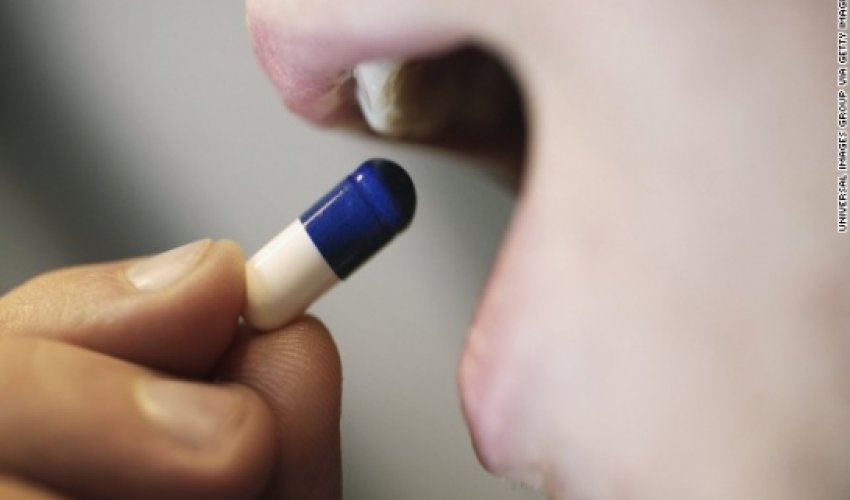Gay, bisexual boys more likely to use steroids

A new study suggests that gay and bisexual adolescent boys are more than five times more likely to use anabolic-androgenic steroids - which increase the development of secondary male sex characteristics - than heterosexual adolescent boys. The study appeared Monday in the journal Pediatrics.Researchers Aaron Blashill and Steven Safren, both affiliated with Massachusetts General Hospital and Harvard Medical School, were "shocked" at how much more steroid use affects sexual minorities, Blashill said. It is not common to find such a strong disparity in psychological research."It really highlights that this is clearly an at-risk group," Blashill said.BackgroundTestosterone and synthetic derivatives of it are forms of anabolic-androgenic steroids. These substances are most commonly used to enhance strength, performance or muscularity, according to the study.Nearly 25% of adult men who misuse these steroids say they first started during adolescence. However, this is the first study to examine the issue as it pertains to sexual orientation in boys, and to find a significant difference in sexual minorities compared to heterosexuals."We know steroid use among boys usually is more driven by appearance-related motives as opposed to performance enhancement, as we see with pro athletes," Blashill said. "The motives are a bit different."Serious health problems may ensue from chronic use of anabolic-androgenic steroids. Adolescent use of these steroids has been associated with cardiovascular, endocrine and psychiatric complications, in addition to other negative health outcomes, the study said.MethodsResearchers analyzed information gathered from 17,250 adolescent boys who came from 14 jurisdictions around the United States. Of these participants, 635 were classified as "sexual minorities" based on their answers to questions about sexual identity, attraction and behavior. The study authors did not ask about transgender identity.The data were collected in the form of surveys given to the boys in 2005 and 2007.Participants answered questions about how many times they had taken steroid pills or shots without a doctor's prescription, as well as questions gauging symptoms of depression and suicidal thoughts. They also answered questions about substance abuse and victimization. A question about asthma was included because this is a condition for which some steroids are used as a treatment.ResultsResearchers found that 21% of adolescent boys who were classified as sexual minorities misused anabolic-androgenic steroids in their lives, compared to 4% of heterosexual boys."The most startling finding is that when you look at the severe users," who had used the steroids 40 or more times in their life, "that disparity continued," Blashill said.Sexual minority boys also tended to have a greater likelihood of experiencing depression or suicidal thoughts, victimization and substance abuse. These were also predictors of misusing anabolic-androgenic steroids.When researchers controlled for these variables, they still observed an effect of sexual minority status on steroid misuse, but it was a weaker association. Blashill believes that body image issues would explain the rest of the link between steroid misuse and sexual orientation, but the study did not directly study perceptions of body image.Previous studies have shown that body dissatisfaction is a strong predictor of anabolic-androgenic steroid misuse, and that gay males tend to report more dissatisfaction with their bodies than heterosexual males.CaveatsThis is a correlational study, which means that researchers did not prove that having symptoms of depression or having been victimized drives people to use anabolic-androgenic steroids. The study did not address whether the pattern is the same in rural vs. urban settings.A possible design flaw is that participants answered questions about using "steroids" without a prescription, not "anabolic-androgenic steroids," so they may have been thinking about corticosteroids such as hydrocortisone. Corticosteroids are drugs resembling cortisol, a hormone produced by the adrenal glands.But the study authors argue that because the steroid question followed prompts about illegal substances, participants were more likely to be thinking about anabolic-androgenic steroids during the survey.More research is needed to confirm the findings of this study.ConclusionsMedical providers, school counselors, and therapists should include anabolic-androgenic steroids as part of a standard assessment of drugs and alcohol, Blashill said. They should also consider other performance and appearance-enhancing drugs, which also carry health risks."If we know that a boy has body image concerns, then we definitely should be assessing what sort of behaviors he might be engaged in, in response to that dissatisfaction," Blashill said.(CNN)ANN.Az




































 Photo
Photo 



 Video
Video 

